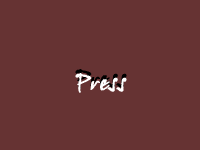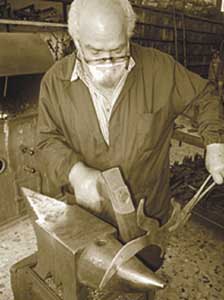
|
The wrought iron is part of
the most spectacular aesthetical mediterranean tradition, and
I think about the baroque balconies of Martina Franca and Lecce,
about those rounded of Tunis, about the gate's volutes of Palma
di Montechiaro...It almost seems that the wrought iron manufactures
with their arabesques, light like spider's webs, contradict the
heay nature of the original material. Rethinking today of the
wrought iron, means considering two key-concepts of our contemporaneity:
lightness and materiality. And at the same time thinking about
two necessities: reapproach to archetypical materials, which are
related to a secular tradition, in order to recover the roots
that connect us to a history, built by human hands, and to find
the lightness again. A physical, but not immaterial, lightness.
Not an escape, but a fair presence. The task of the planners,
who have to interpret this material, has essentially been combining
materiality and lightness, trying to imagine new volutes, where
the iron could soften its gravity. It is a difficult task, because
the material proposes itself with the weight of a connotated and
almost ineluctable stilistic past. And something handmade is often
a restraint for facing new ways, because it suggests traditional
shapes. And yet the variegated collection is able to inaugurate
a new genre, putting itself in the outline of handcrafted design
operations, not with a manner feature, but with a new authentical
one, like many others, that are not anything else than variations
on a theme . It does not appear eclectic, even if the personality
of the single projects emerges acutly, thanks to the guideline,
represented by the material and the executive technique. It can
be considered as a coloured flowerbed and certainly not as a brushwood
garden, where every grass grows freely. Many of the pieces recall
the animal and vegetal universe: birds, sunflowers, butterfly's
wings...analogies, that allude immediately to lightness, other
pieces instead reinterpret friezes and grotesques, creating a
sort of new decorative alphabet. As a whole the distinguishing
feature is the poetic vein, sometimes slightly naif, that transforms
a headbord in a bird's flight, an umbrellastand in a sort of sunflower,
a hatstand in a tuft of trembling reeds...Shortly it seems like
most of the projectists, except for those, who want to readfirm
the heaviness of the material, using more consistent thicknesses,
have worked the iron as it was like a candy floss ribbon, giving
him again an imagine of flexibility and lightness. |
CRISTINA
MOROZZI |

|
Is
it possible to reach formal synthesis between creative craftsmen
and famous designers, that deal with an antique technology: the
wrought iron? This has been our bet. Ferr Art is a tuscan firm,
that workes iron since five generations. It has created furniture
and objects, which take us back to antique, medieval atmospheres,
combined with new inspirations, originated from the creative sense
of the craftsman, who interprets the object at the same moment when
he is creating it. The considered planners, chosen among those of
the main research areas, come from different cultures and planning
ideas. This fact derives from the idea to create a dissimilar and
complex outline, rich of various languages. The only guideline is
to be the worked iron. It is a material of our tradition, entraped
in this role and never called to express our contemporaneity. Therefore
we did not asked our projectists for a rereading, seen as redesign
of past systems, but a research on the intrinsec potentiality of
this material, following only the dreams of the moment, in order
to set up objects for domestic use, produced in limited editions.
The main features of this collection have in this way become the
poeticalness, the value, that every one has expressed in his object,
enabling it to touch the sphere of emotionality. This aspect is
rarely achievable in the outline of industrial production, as the
more complex process, that leads to the finished object, often empties
the first idea of its emotional charge. |
Santina
Bonini
Cinzia Galimberti Ernesto Spicciolato |